- Home
- Philip Pullman
Daemon Voices Page 21
Daemon Voices Read online
Page 21
In the middle of the seventeenth century, Vermeer was deeply interested in representing the appearance of a young girl with a pearl earring and her mouth slightly open—and he was equally interested in the way he could represent her three-dimensionalness by painting the highlight in her left eye in a very slightly different place from the one in her right.
The Chinese artist of the Ching dynasty who painted a branch of bamboo on a porcelain pot was trying not only to make it look like bamboo, but also to dispose the line of the branch and the leaves across the curved surface in a way that would be beautiful even if it meant nothing.
The marks in soft black crayon that Seurat made on rough paper in 1884 look just like the figure of a woman that he intended them to, but we can also see the sensuous pleasure he took in the application of the pigment, the way the light seems to soften and gather around the edges where the pigment catches only the high parts of the paper and lets the tiny depressions remain white.
The unknown, the immensely ancient geniuses who painted the bison, the horses, the lions on the cave walls of Lascaux and Chauvet 20,000, 30,000 years ago, took the greatest of care to represent them accurately, but that wasn’t their only motivation: we can also see a delight in the rhythmic arrangement of the figures, an awareness of the contours of the cave and how they could be used to add liveliness and movement to the shapes they outlined with ochre and carbon.
All those great artists are contemporaries, not only of one another but of us too. Art does not progress by improving what came before, by doing to it what chemistry did to alchemy: art does not progress in that sense at all. Great art has always had this double character, this ability to look at the world and to look at itself at the same time, and the greatest art is perhaps where we see the two things in perfect balance.
That’s the real difference between A Bar at the Folies-Bergère and “And When Did You Last See Your Father?” Yeames and all the other Victorian narrative painters were only interested in half of what there was to be interested about. Manet was interested in all of it. A Bar at the Folies-Bergère is about a bar at the Folies-Bergère; it’s about the mystery of that unfathomable expression on this ordinary young woman’s face; it’s about those legs suspended at the very end of the acrobat’s swing; it’s about champagne and oranges and tobacco smoke and chandeliers and fashionable dress; but it’s also about seeing, and about recording the way the light glistens on those oranges, and the way things in a mirror are different from things in front of our eyes; it’s about the sensation of sight and the mysteries of representation; it’s about painting itself.
THIS ESSAY WAS ORIGINALLY PUBLISHED IN WHAT MAKES A MASTERPIECE: ENCOUNTERS WITH GREAT WORKS OF ART, EDITED BY CHRISTOPHER DELL, 2010.
In a book of reproductions of famous paintings, we can see the pictures with marvellous clarity, thanks to modern printing techniques. And when we look at paintings online, on the websites of the great museums and galleries, the sense of light shining through them makes them even more vivid than being printed. What we don’t get from such experiences is a sense of scale. Part of the physical experience of seeing on a gallery wall (for instance) Salvador Dalí’s The Persistence of Memory with its famous melting clock is seeing, with a slight shock, how small it is; and an encounter with Jackson Pollock’s Autumn Rhythm is incomplete without seeing it both from halfway across the gallery and from very close up, to examine how intricately the skeins of dripped paint are interwoven. In a book, every picture, like every other one, is a size that will fit on the page.
Poco a Poco
THE FUNDAMENTAL PARTICLES OF NARRATIVE
On one such particle traced through many different stories
First of all, I want to thank Trinity College for inviting me to join the distinguished list of writers who’ve given the Richard Hillary Lecture. My predecessors seem to have covered a great deal of ground, but I think there are a few more things to say. In any case what I’m going to talk about this evening is not a settled authoritative statement of anything, but more in the nature of a report of discovery in progress. Every so often I see something new about the craft of storytelling, and when I do I like to stop and rearrange my ideas; so, as I say, this is not a final pronouncement on the art, but the latest stage of my research, as it were.
Now lectures, like the language they’re given in, are sequential and not instantaneous, and whenever we have something to say, we come up against the problem of what order to put our remarks in. Order them this way, and they tell one story; order them differently, and they tell another one. “What story do I want to tell?” is the question we have to ask ourselves.
Well, today I want to tell a story about fundamental particles: the fundamental particles of narrative. We’re going to look at what they are and how they work, what they’re made of and what sort of charge they can carry; we’re going from Fairyland to Babylon, from the river Jordan to the slopes of Parnassus, and we’re going to finish with a cup of tea.
So the first thing I’ll do is read two very short extracts from books of mine. I’ll be coming back to them later in the talk, but if I get them out of the way now it won’t interrupt the argument when I do.
The first comes from a fairy tale called Clockwork. Karl, the bitter young clockmaker’s apprentice, and a sinister stranger are talking in the inn.
“Bring a glass for my companion,” said Dr. Kalmenius, “and then you may leave us.”
The landlord put the bottle and another glass on the counter. Only five minutes before, the parlour had been full to bursting; but now Dr. Kalmenius and Karl were alone, and the inn was so quiet that Karl could hear the whisper of flames in the stove, and the ticking of the old clock in the corner, even over the beating of his own heart.
Dr. Kalmenius poured some brandy, and pushed the glass along the bar. Karl said nothing. He bore the stranger’s stare for nearly a minute, and then he banged his fist on the counter and cried:
“God damn you, what do you want?”
The second comes from I Was a Rat! Roger, the little pageboy who says he used to be a rat, has been taken in by old Bob and Joan. They give him some bread and milk, and he tries to eat it by putting his face down to the bowl.
“What you doing?” said Joan. “Dear oh dear! You don’t eat like that. Use the spoon!”
The boy looked up, milk in his eyebrows, bread up his nose, his chin dripping.
“He doesn’t know anything, poor little thing,” said Joan. “Come to the sink, my love, and we’ll wash you. Grubby hands and all. Look at you!”
The boy tried to look at himself, but he was reluctant to leave the bowl of bread and milk.
“That’s nice,” he said. “I like that…”
“It’ll still be here when you come back,” said Bob. “I’ve had my supper already, I’ll look after it for you.”
The boy looked wonder-struck at this idea. He watched over his shoulder as Joan led him to the kitchen sink and tipped in some water from the kettle, and while she was washing him he kept twisting his wet face round to look from Bob to the bowl and back again.
“That’s better,” said Joan, rubbing him dry. “Now you be a good boy and eat with the spoon. I’m surprised they didn’t teach you manners when you was a pageboy.”
“I was a rat,” he said.
Now as I said a minute ago, I want to look at some fundamental particles and their associated forces—what they are and what they do. The search for the fundamental particles of matter, of course, is an enthralling one, with each discovery supplanting the one before it: everything is made of water, said Thales; no, everything is made of fire, said Heraclitus; no, there are four elements—fire, water, and earth, and air; no, the fundamental particle is the atom, whose very name means that it cannot be cut or divided any further; no, atoms themselves are made up of smaller particles, electrons and protons and neutrons; no, we can go smaller s
till, and discover all kinds of exotic little bits down there in the very small, quarks and neutrinos and the like, with properties so strange that we can’t even imagine them; and one of the latest theories maintains that the very smallest things are not particles at all but loops of vibrating string…The search for what matter is made of still continues, because I gather that the string theory itself is now beginning to be questioned.
But what are stories made of? Are they made of words? It would be easy to think that they are, because so many stories come to us in the form of words, whether printed or spoken. Words do tell stories, but pictures aren’t bad at it, and even ballet can manage to convey what happens and then what happens next, in a broad sort of way. The reason language is so good at transmitting stories is that stories happen in time—one thing is succeeded by another, and was prepared for by something that happened earlier—and the sequential nature of language fits that temporal aspect of their nature. Besides, time is built into the very grammar: we have a variety of tenses that allows us to notate with great precision the order of events in time, and how long they go on for, and so on.
But stories are not made of language. I don’t think they’re made of any of the media in which they may happen to be transmitted. I’m going to say straight out that I think stories are made of events, and that the fundamental particles of story are the smallest events we can find. So small, in fact, that they are more or less abstract. The scale on which we live, with our bodies and our normal everyday consciousness, is round about the middle scale of size between the cosmic level and the quantum level, and one of the characteristics of this middle scale is individual difference, every person, every face, every story, being recognisably itself and different from everything else; some novels are very similar to others, to be sure, but when we discover a novel that’s exactly the same as another one, we call it plagiarism. But what we find when we think our way down to the scale of the very small is that everything down there is the same. Abstract, neutral, devoid of inflection or emotional colouring of any kind; rather like a parallelogram or a mathematical equation. An abstract narrative particle.
I’m going to focus on just one of these little abstract narrative particles tonight, which is this one—
A little story about pouring something out of a container. That’s all it is. The liquid is in here, and we pour it out into there.
Now one reason I find these fundamental particles so interesting is that they explain something that’s otherwise very difficult to understand. It’s this: there is so much information coming at us every second, especially through our eyes, and yet somehow we effortlessly extract the essential narrative heart of it without even realising what we’re doing. Every square millimetre in our entire visual field is occupied. The point is firstly that there is an overwhelming Niagara Falls of information pouring into our eyes, and, secondly, that we are not overwhelmed by it.
The Milkmaid by Johannes Vermeer
We’re not overwhelmed, because our unconscious mind does so much sorting out and interpreting for us that we take it for granted that things just sort themselves out. We’re in the position of immensely rich monarchs in the grandest period of royalty such as Louis XIV, for whom every routine activity is done by a thousand servants whose job is to work perfectly and remain invisible. Each of us has a staff of diligent butlers, footmen, housekeepers, kitchen maids, gardeners, secretaries, clerks, all working away night and day, sorting everything out for us. Something deeper than our conscious mind selects the essential from the inessential in the constantly changing colours and shapes we see, and lets us understand without the slightest effort what’s happening—and thanks partly to our experience of this fundamental particle of narrative, we map the little abstract story we’re familiar with on to the welter of sense-impressions, and we realise that someone is watering the hanging basket.
And in fact every experience we have of, for example, pouring milk into a bowl of cornflakes, or pouring coffee from a cafetière into a mug, or everything we read in a story about Sherlock Holmes letting drops of a chemical fall into a solution in a test tube, or Jeeves pouring a cocktail for Bertie Wooster, or see in a play-within-a-play about a murderer pouring poison into his victim’s ear—our understanding of all these processes is underpinned by our familiarity with the basic little story about pouring something out of a container. Our knowledge of the pattern lets us see different parts of those other stories in their proper relation to the whole, and not get snagged on the details instead of getting the main point. Furthermore—and this is where it gets really interesting—these little patterns, many of them based on spatial experience, can be used to make sense of things that are not spatial at all. We’ll come back to that later on.
But the little original skeletal story, the fundamental particle itself, grows directly out of the experience of our bodies: our acquired knowledge of how things behave relative to one another in space, and how our limbs and our senses interact with them.
Fundamental particles like the pouring-from-a-container idea are sometimes known as image schemas. My interest in this was sparked by the work of George Lakoff and Mark Turner and Mark Thompson and other cognitive linguists, but in my butterfly way I’ve cheerfully taken what I want from their work and carried it away to do something else with it. You remember what Muhammad Ali said: he said his method was to float like a butterfly, sting like a bee. My variation is that I read like a butterfly, and write like a bee. So, fluttering lightly from place to place like a Camberwell beauty in a wayward summer breeze, I’m going to follow this little bit of narrative about and see what turns up, and first of all we’ll take it literally: pictures and stories about pouring something out of a container.
So here are a few examples of the sort of thing we can do with this little pattern, this fundamental particle of story.
One way we make meaning out of an action is to read it in a context. Here is a detail from The New Yorker:
Cartoon for The New Yorker by Wallace Morgan
This is a scene in a crowded and fashionable restaurant, perhaps, or a club. The actual joke isn’t great…But we might just wonder why the gentleman at the table in the background isn’t ordering a drink from the waiter. Why is he using a hip flask? Well, the date is 1926, and therefore the drink he’s pouring out is certainly bootleg liquor. Perhaps the club is a speakeasy, and it’ll be raided by the police any moment. The pouring-out story isn’t at the centre of the action here, it’s at the edge, it’s part of the scenery. It’s just a little throwaway detail at the middle of the artwork, its function being to wink at us, as it were, and say, “You know where we are.”
Here’s another cartoon from The New Yorker, this time by the great Charles Addams.
Christmas Carollers by Charles Addams
Because of the way we integrate this little pouring-something-out story into what goes on around it, by means of the effortless work (effortless to our conscious minds) done by all those neuronal secretaries and filing clerks and so on, we can look at a picture and see beyond the moment that’s being depicted. We can see what’s going to happen next, and what has led up to it.
And in order to understand this cartoon, which we all effortlessly do, we instantaneously call on our memories not only of what we’ve seen happen when you tip over a container of liquid, but of such things as carol singing—we know why there is a group of people standing in the snow, and what they’re doing, and we contrast the innocent purity of their intentions with the wicked mischief being planned by Morticia, Gomez and the rest of the Addams family on the roof; and we understand graphic imagery too—we interpret the wispy trail of white leading from the container as meaning that this isn’t just cold water, it’s hot. It’s probably boiling oil. And all this resides in a subtle framework of ironical understanding that lets us laugh instead of recoiling in horror. This is a cartoon. It’s not real. It’s situated in a tradition of
mock-Gothickry with which the very name Charles Addams is synonymous. What’s more, in this cartoon, unlike the first one, the act of pouring isn’t just scenery, it is the very joke itself.
And look how important it is to get the timing right. This split-second is the funny one; a split-second earlier or later would not be.
The action of pouring something out of a container, the fundamental particle itself, is emotionally neutral, as I said. It can take any tone, any emotional colouring.
This next one is a light-hearted one, from a sequence of pictures from the immense collection of Eadweard Muybridge, whose research into the photography of motion was a precursor of the movies.
A sequence of photographs showing movement by Eadweard Muybridge
His pictures of horses galloping established once and for all something that every painter of horses had wondered about and none had been able to know for certain—that there does come a moment when all four of the horse’s feet are off the ground at once. His studies of The Human Figure in Motion showed men and women running, jumping, throwing things, walking, standing up and sitting down, with photographs taken a fraction of a second apart—a great and previously unavailable resource for artists concerned with the human figure. I’m not sure that any artist in previous centuries had ever really wondered what it would look like when you tipped a bucket of water over a young lady in the bath, but just in case, here is the evidence.
This little sequence, and all the others in Muybridge’s great work, are actually hugely significant in the history of storytelling. I mentioned the business of time and language earlier on: in Muybridge’s studies, and in the work a little later of the Lumière brothers which were the real beginnings of cinema, it became possible for the first time ever for pictures to show time passing without the intervention of language. A sequence of pictures could embody and depict time itself, without any words being used. You could make sequences of pictures before then, of course, but people seldom did, because it was so laborious: you had to draw every one separately. This, by comparison, was effortless. And among all the hundreds and thousands of photographs that Muybridge made of living creatures in motion, there was room for a splash.

 The Golden Compass
The Golden Compass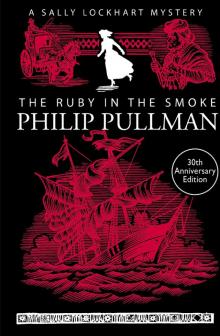 The Ruby in the Smoke
The Ruby in the Smoke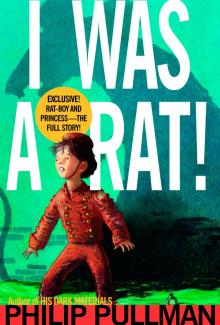 I Was a Rat!
I Was a Rat!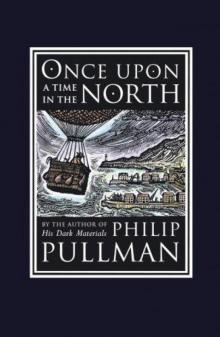 Once Upon a Time in the North
Once Upon a Time in the North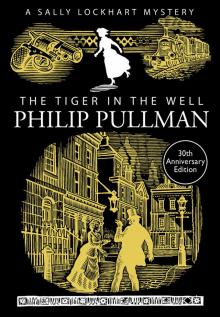 The Tiger in the Well
The Tiger in the Well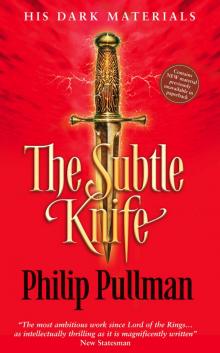 The Subtle Knife
The Subtle Knife The Butterfly Tattoo
The Butterfly Tattoo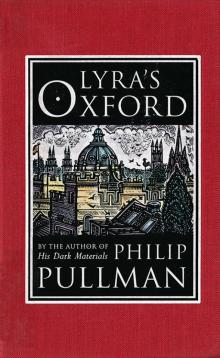 Lyra's Oxford
Lyra's Oxford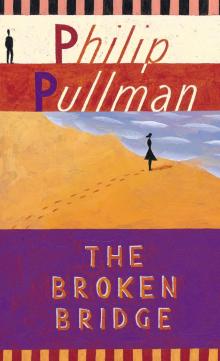 The Broken Bridge
The Broken Bridge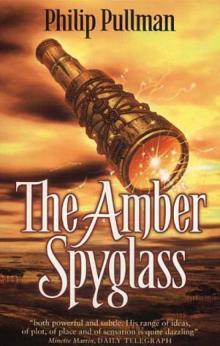 The Amber Spyglass
The Amber Spyglass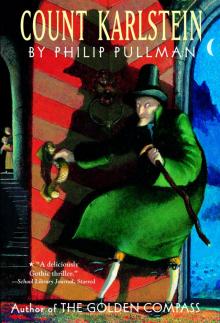 Count Karlstein
Count Karlstein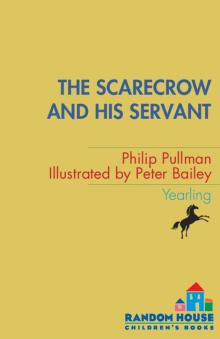 The Scarecrow and His Servant
The Scarecrow and His Servant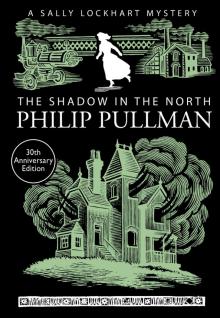 The Shadow in the North
The Shadow in the North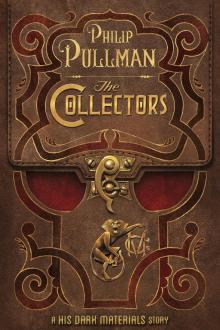 The Collectors
The Collectors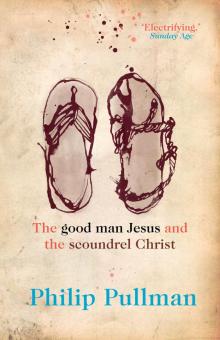 The Good Man Jesus and the Scoundrel Christ
The Good Man Jesus and the Scoundrel Christ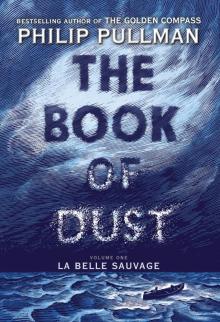 La Belle Sauvage
La Belle Sauvage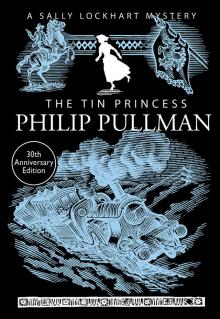 The Tin Princess
The Tin Princess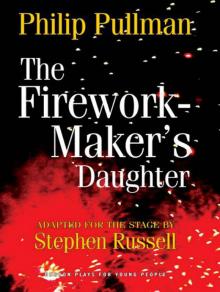 The Firework-Maker's Daughter
The Firework-Maker's Daughter The Book of Dust: The Secret Commonwealth (Book of Dust, Volume 2)
The Book of Dust: The Secret Commonwealth (Book of Dust, Volume 2)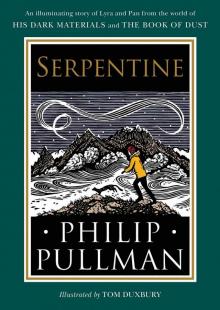 Serpentine
Serpentine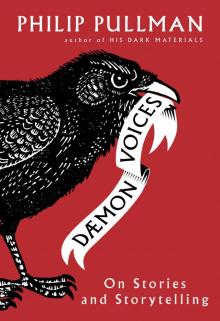 Daemon Voices
Daemon Voices The Amber Spyglass: His Dark Materials
The Amber Spyglass: His Dark Materials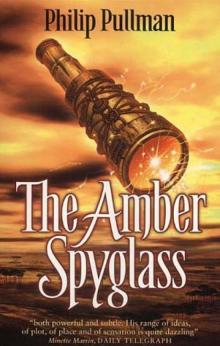 The Amber Spyglass hdm-3
The Amber Spyglass hdm-3 The Haunted Storm
The Haunted Storm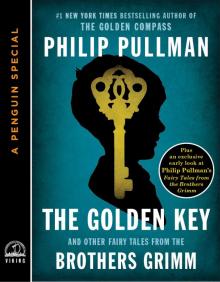 The Golden Key
The Golden Key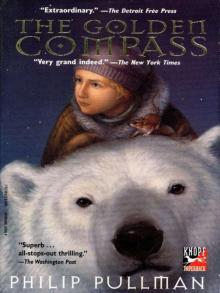 His Dark Materials 01 - The Golden Compass
His Dark Materials 01 - The Golden Compass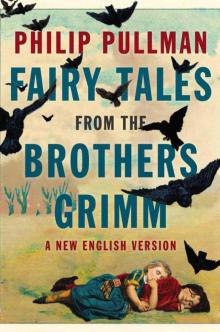 Fairy Tales from the Brothers Grimm: A New English Version
Fairy Tales from the Brothers Grimm: A New English Version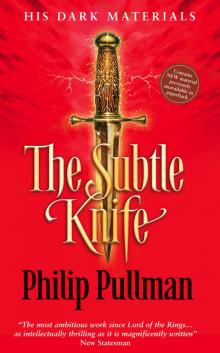 His Dark Materials 02 - The Subtle Knife
His Dark Materials 02 - The Subtle Knife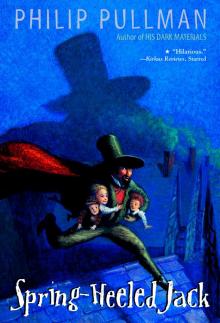 Spring-Heeled Jack
Spring-Heeled Jack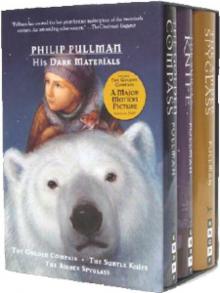 The Golden Compass hdm-1
The Golden Compass hdm-1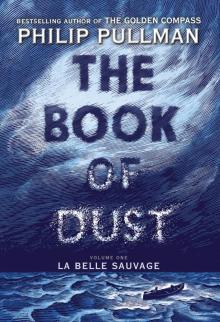 The Book of Dust, Volume 1
The Book of Dust, Volume 1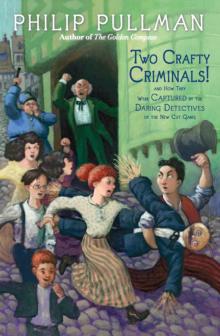 Two Crafty Criminals!
Two Crafty Criminals!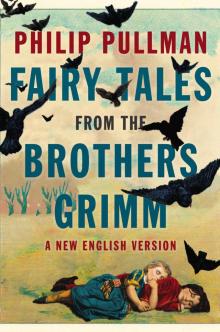 Fairy Tales from the Brothers Grimm
Fairy Tales from the Brothers Grimm The Subtle Knife: His Dark Materials
The Subtle Knife: His Dark Materials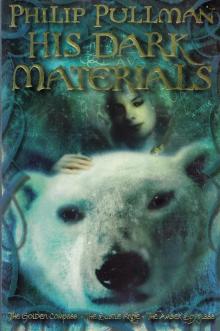 His Dark Materials Omnibus
His Dark Materials Omnibus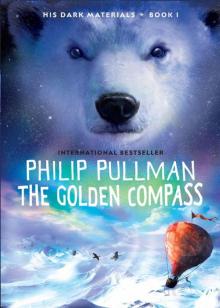 The Golden Compass: His Dark Materials
The Golden Compass: His Dark Materials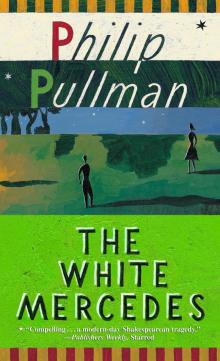 The White Mercedes
The White Mercedes